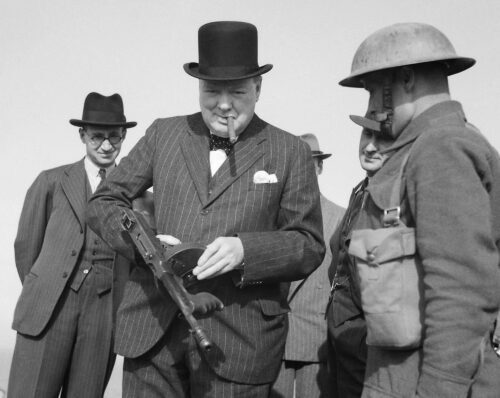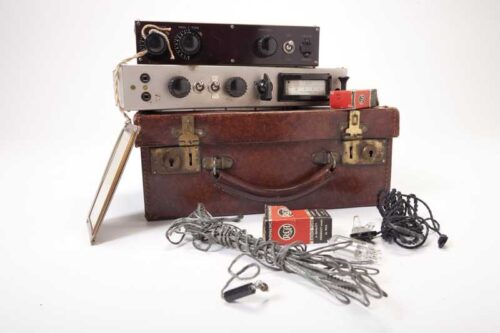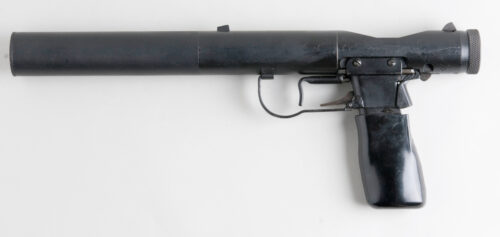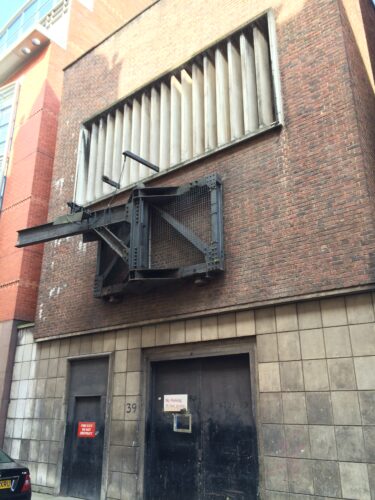Kingsway Exchange Tunnel in 2014. Photo: John Pannell from Watford, UK. CC BY 2.0.
The Kingsway Exchange Tunnels are a hidden network of underground passages that stretch for about a mile under central London, between Holborn and the historic Square Mile. They were built during the Second World War as a deep-level shelter to protect Londoners from the German air raids, known as the Blitz. However, they never served that purpose, as they were completed after the worst of the bombing was over. Instead, they became a secret base for British intelligence agencies, such as the Special Operations Executive (SOE) and MI6, who used them for covert operations and communications.

The SOE was created in July 1940 by Prime Minister Winston Churchill, with the instruction to ‘set Europe ablaze’ by helping local resistance movements and conducting espionage and sabotage in enemy-held territories. The SOE operated in countries under the occupation of Nazi Germany, including France, Belgium, Greece, Albania, Yugoslavia and Italy. They also operated in the Far East in a branch known as Force 136. The SOE agents were generally dropped by parachute, although some were transported by submarine or small boats. They used suitcase radios to communicate with SOE headquarters and arrange supply drops and the movement of personnel. They also used a variety of weapons, gadgets and camouflage materials, many of them developed by SOE’s research and development stations.

The SOE’s “Q Branch”, as it is often referred to today, was responsible for developing and supplying gadgets and weapons for agents in the field. It was officially known as Station IX (originally the Inter-Services Research Bureau), one of several similar workshops and laboratories throughout England during the war. Station IX was commanded by Lieutenant Colonel John Dolphin. Station IX was an inspiration for Q Branch gadget division in Ian Fleming’s James Bond novels and films.

MI6, formally known as the Secret Intelligence Service (SIS), is the British government agency responsible for the collection, analysis, and dissemination of foreign intelligence. MI6 has its origins in the Secret Service Bureau, founded in 1909 to control the UK’s intelligence activities. Originally split into naval and army sections, these branches rapidly came to focus on overseas and domestic security respectively. This division was formalized with the separation of the Secret Intelligence Service in 1911. The name “MI6” (meaning Military Intelligence, Section 6) originated as a convenient label during the Second World War, when SIS was known by many names. It is still commonly used today. The existence of SIS was not officially acknowledged until 1994.
Cold War Era
The Kingsway Exchange Tunnels housed the “hotline” that connected the leaders of the US and the USSR during the Cold War, allowing them to communicate directly in times of crisis. The hotline was installed in 1963, after the Cuban Missile Crisis, and it consisted of four teletype machines that transmitted encrypted messages via a cable that ran through the tunnels.
The tunnels were also home to the Kingsway Telephone Exchange, a protected switching centre that handled trunk calls and international circuits. The exchange was the UK termination point for TAT-1, the first transatlantic telephone cable that linked North America and Europe in 1956. The exchange employed over 200 staff, who worked in shifts around the clock to operate and maintain the phone lines. The exchange was also responsible for preventing radio interference to television viewers and radio listeners in north and central London from external sources such as thermostats, fluorescent tubes and injection molding equipment. The exchange also hosted the country’s first radio paging terminal in the 1970s, and a backup computer system for international circuit allocation in the 1980s.

At one time, the tunnels had a staff restaurant, tea bar, games room and licensed bar, which claimed to be the deepest in the UK, at about 200 feet (60 meters) below street level. The tunnels also contained an artesian well and rations to sustain several hundred people for many months, in case of a nuclear attack. The tunnels were decommissioned in the 1980s, when the telephone technology became obsolete and large quantities of blue asbestos were found on the site. The tunnels have been closed to the public ever since, except for occasional tours by BT (formerly British Telecom) engineers.
High-End Tourist Attraction
There are plans to transform the Kingsway Exchange Tunnels into a high-end tourist attraction, with a museum, a bar, and a recreation of the SOE’s Q Branch. The project, called The London Tunnels, is expected to cost $268 million and open in 2027, if approved by the authorities. It would be one of London’s most unique and historic attractions, offering visitors a glimpse into the secret history of espionage and warfare.
*The views and opinions expressed on this website are solely those of the original authors and contributors. These views and opinions do not necessarily represent those of Spotter Up Magazine, the administrative staff, and/or any/all contributors to this site.


